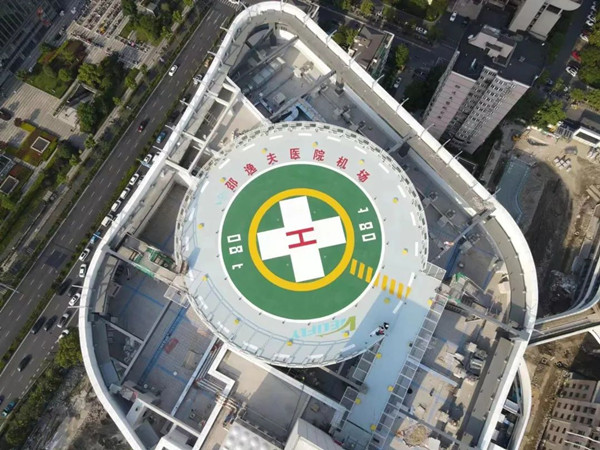Construction of the fifth phase of the Sir Run Run Shaw Hospital of Zhejiang University School of Medicine, the supporting health care project of the 2022 Asian Games in Hangzhou, East China's Zhejiang Province, has been completed.

A design image of the Sir Run Run Shaw Hospital of Zhejiang University School of Medicine in Hangzhou, East China's Zhejiang Province [Photo/sasac.gov.cn]
Contracted by China Construction Second Engineering Bureau Ltd., a subsidiary of China State Construction Engineering Corporation (CSCEC), the project covers a total area of 119,700 square meters and consists of two steel-structured tower buildings, a podium building and an underground parking lot.
Once operational, it is expected to be a public Class A tertiary comprehensive hospital integrating medical care, teaching and scientific research.

A bird's-eye view of the helicopter parking apron at the top floor of a tower building of the Sir Run Run Shaw Hospital of Zhejiang University School of Medicine [Photo/sasac.gov.cn]
One of the tower buildings features large lecture hall, conference center and specialized research and teaching rooms, which will provide an advanced hardware platform for first-class clinical discipline development and talent introduction.
The other tower building is a comprehensive medical and outpatient facility integrating outpatient, international health care and telemedicine, the endoscopy center, the cardiac DSA treatment center and VIP wards.
The top floor of that building is equipped with the most advanced domestic medical rescue helicopter parking apron in China, forming a three-dimensional emergency network combining ground and air services in Hangzhou.
Since the start of construction, the project has won several awards in building construction and quality. The innovative engineering developed during the construction will provide experience for construction of future new medical infrastructure projects.
(Executive editor: Li Zhiyong)